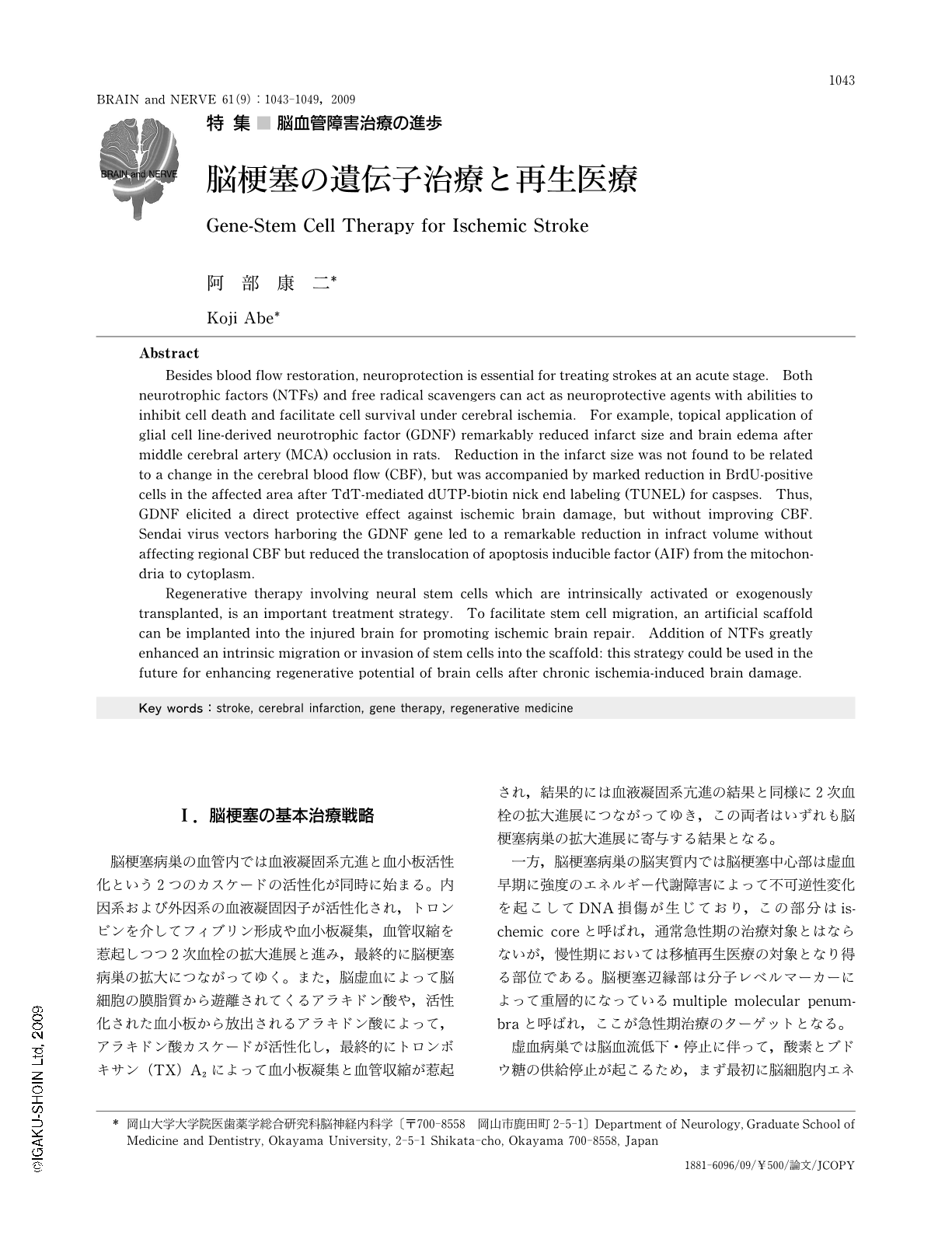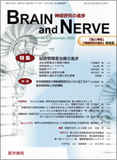Japanese
English
- 有料閲覧
- Abstract 文献概要
- 1ページ目 Look Inside
- 参考文献 Reference
Ⅰ.脳梗塞の基本治療戦略
脳梗塞病巣の血管内では血液凝固系亢進と血小板活性化という2つのカスケードの活性化が同時に始まる。内因系および外因系の血液凝固因子が活性化され,トロンビンを介してフィブリン形成や血小板凝集,血管収縮を惹起しつつ2次血栓の拡大進展と進み,最終的に脳梗塞病巣の拡大につながってゆく。また,脳虚血によって脳細胞の膜脂質から遊離されてくるアラキドン酸や,活性化された血小板から放出されるアラキドン酸によって,アラキドン酸カスケードが活性化し,最終的にトロンボキサン(TX)A2によって血小板凝集と血管収縮が惹起され,結果的には血液凝固系亢進の結果と同様に2次血栓の拡大進展につながってゆき,この両者はいずれも脳梗塞病巣の拡大進展に寄与する結果となる。
一方,脳梗塞病巣の脳実質内では脳梗塞中心部は虚血早期に強度のエネルギー代謝障害によって不可逆性変化を起こしてDNA損傷が生じており,この部分はischemic coreと呼ばれ,通常急性期の治療対象とはならないが,慢性期においては移植再生医療の対象となり得る部位である。脳梗塞辺縁部は分子レベルマーカーによって重層的になっているmultiple molecular penumbraと呼ばれ,ここが急性期治療のターゲットとなる。
Abstract
Besides blood flow restoration, neuroprotection is essential for treating strokes at an acute stage. Both neurotrophic factors (NTFs) and free radical scavengers can act as neuroprotective agents with abilities to inhibit cell death and facilitate cell survival under cerebral ischemia. For example, topical application of glial cell line-derived neurotrophic factor (GDNF) remarkably reduced infarct size and brain edema after middle cerebral artery (MCA) occlusion in rats. Reduction in the infarct size was not found to be related to a change in the cerebral blood flow (CBF), but was accompanied by marked reduction in BrdU-positive cells in the affected area after TdT-mediated dUTP-biotin nick end labeling (TUNEL) for caspses. Thus, GDNF elicited a direct protective effect against ischemic brain damage, but without improving CBF. Sendai virus vectors harboring the GDNF gene led to a remarkable reduction in infract volume without affecting regional CBF but reduced the translocation of apoptosis inducible factor (AIF) from the mitochondria to cytoplasm.
Regenerative therapy involving neural stem cells which are intrinsically activated or exogenously transplanted,is an important treatment strategy. To facilitate stem cell migration,an artificial scaffold can be implanted into the injured brain for promoting ischemic brain repair. Addition of NTFs greatly enhanced an intrinsic migration or invasion of stem cells into the scaffold: this strategy could be used in the future for enhancing regenerative potential of brain cells after chronic ischemia-induced brain damage.

Copyright © 2009, Igaku-Shoin Ltd. All rights reserved.


